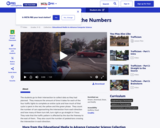
Students go to an intersection to collect data on traffic light congestion. This is part of a 7-part engineering design lesson. [1:31]
- Subject:
- Science
- Material Type:
- Audio/Video
- Provider:
- PBS LearningMedia
- Date Added:
- 11/06/2023

Students go to an intersection to collect data on traffic light congestion. This is part of a 7-part engineering design lesson. [1:31]
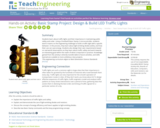
Students learn about traffic lights and their importance in maintaining public safety and order. Using a Parallax® Basic Stamp 2 microcontroller, students work in teams on the engineering challenge to build a traffic light with a specific behavior. In the process, they learn about light-emitting diodes (LEDs), and how their use can save energy. Students also design their own requirements based on real-world observations as they learn about traffic safety and work towards an interesting goal within the realm of what is important in practice. Knowledge gained from the activity is directly transferrable to future activities, and skills learned are scalable to more ambitious class projects.

This animation produced by WGBH and Digizyme, Inc. demonstrates the experimental technique used to introduce DNA plasmids inside bacterial cells, a process called bacterial transformation.

In this video segment adapted from NASA, learn how engineers are transforming the future of flight by designing airplanes based on principles found in nature. In the early 1900s, the Wright Brothers found inspiration for their first airplane in nature. Their "Flyer," which was modeled on a bird's flexible wing design, was steered and stabilized by pulleys and cables that twisted the wingtips. Despite its success, this control strategy quickly vanished from aviation. Instead, stiff wings capable of withstanding the greater forces associated with increased aircraft weights and flying speeds became the standard. In this video segment adapted from NASA, learn how designs found in nature have inspired today's aerospace engineers as they conceive the next-generation of flying machines. Grades 3-12.
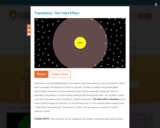
Transistors are the building blocks of modern electronic devices. Your cell phones, iPods, and computers all depend on them to operate. Thanks to today's microfabrication technology, transistors can be made very tiny and be massively produced. You are probably using billions of them while working with this activity now--as of 2006, a dual-core Intel microprocessor contains 1.7 billion transistors. The field effect transistor is the most common type of transistor. So we will focus on it in this activity.

Watch the ZOOM cast build a chair out of newspaper by making good use of the strength of triangles.

In this video segment adapted from ZOOM, the cast tries to design and build a bridge made out of drinking straws that will support the weight of 200 pennies.
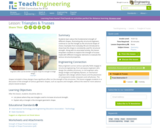
Students learn about the fundamental strength of different shapes, illustrating why structural engineers continue to use the triangle as the structural shape of choice. Examples from everyday life are introduced to show how this shape is consistently used for structural strength. Along with its associated activity, this lesson empowers students to explore the strength of trusses made with different triangular elements to evaluate the various structural properties.
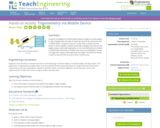
Students investigate the relationships between angles and side lengths in right triangles with the help of materials found in the classroom and a mobile device. Using all or part of a meter stick or dowel and text books or other supplies, students build right triangles and measure the angles using a clinometer application on an Android® (phone or tablet) or iOS® device (iPhone® or iPad®). Then they are challenged to create a triangle with a given side length and one angle. The electronic device is used to measure the accuracy of their constructions.
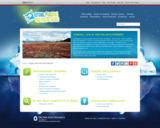
This issue of the free online magazine, Beyond Penguins and Polar Bears, explores the tundra and how it can illustrate ecological concepts, relationships, and changes.
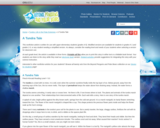
This nonfiction article, written for students in grades 4-5, explores the relationships between various tundra species: marsh marigolds, bot flies, and caribou. Modified versions are available for students in younger grades.
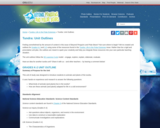
This article assembles free resources from the Tundra: Life in the Polar Extremes issue of the Beyond Penguins and Polar Bears cyberzine into a unit outline based on the 5E learning cycle framework. Outlines are provided for Grades K-2 and 3-5.
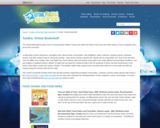
This article features children's literature about the tundra, food chains, and food webs.

This interactive activity, from the Building Big Web site, explores tunneling and the tools and methods used to do the job.

Lab investigating conservation of energy and projectile motion.

This article describes robots that are helping scientists explore the Gakkel Ridge deep below the Arctic Ocean and links to informational text about them. Versions are available for students in grades K-1, 2-3 and 4-5. Related science and literacy activities are included.
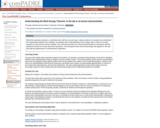
This series of questions before instruction, in-class peer instruction as students come to understanding, and visualization of an important mathematical relationship allow students to iterate and improve their understanding of work incrementally.
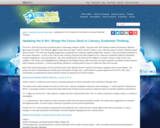
This article summarizes and links to two Science and Children articles that modify the KWL chart to include literacy skills and evidence-based claims.

This article discusses the strategy of using discrepant events in elementary science instruction. It includes links to four video clips of the sun's path in the Arctic or Antarctica.
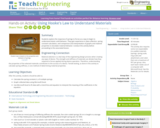
Students explore the response of springs to forces as a way to begin to understand elastic solid behavior. They gain experience in data collection, spring constant calculation, and comparison and interpretation of graphs and material properties to elucidate material behavior. Conduct this activity before proceeding to the associated lesson.